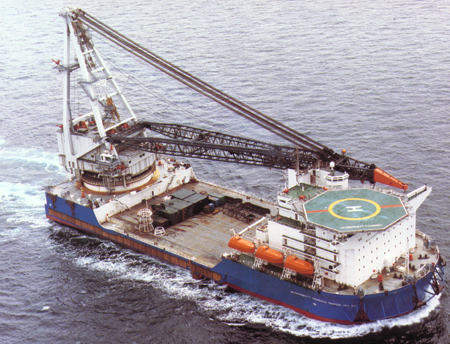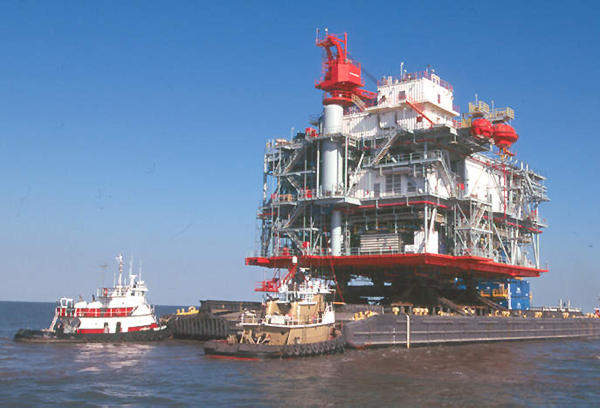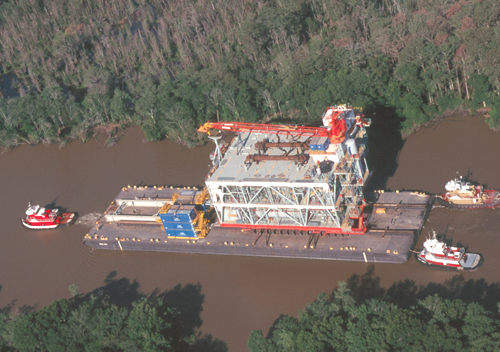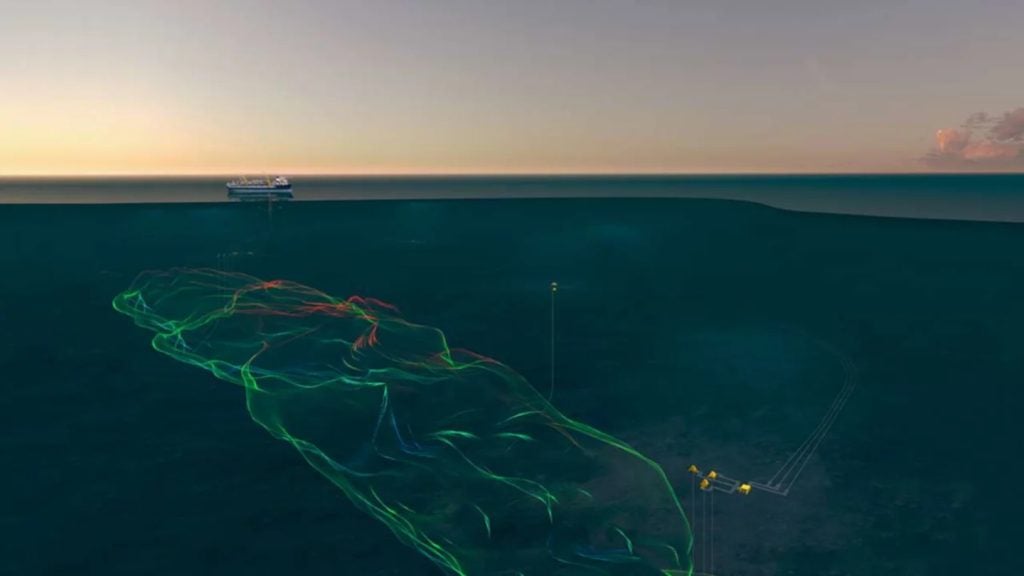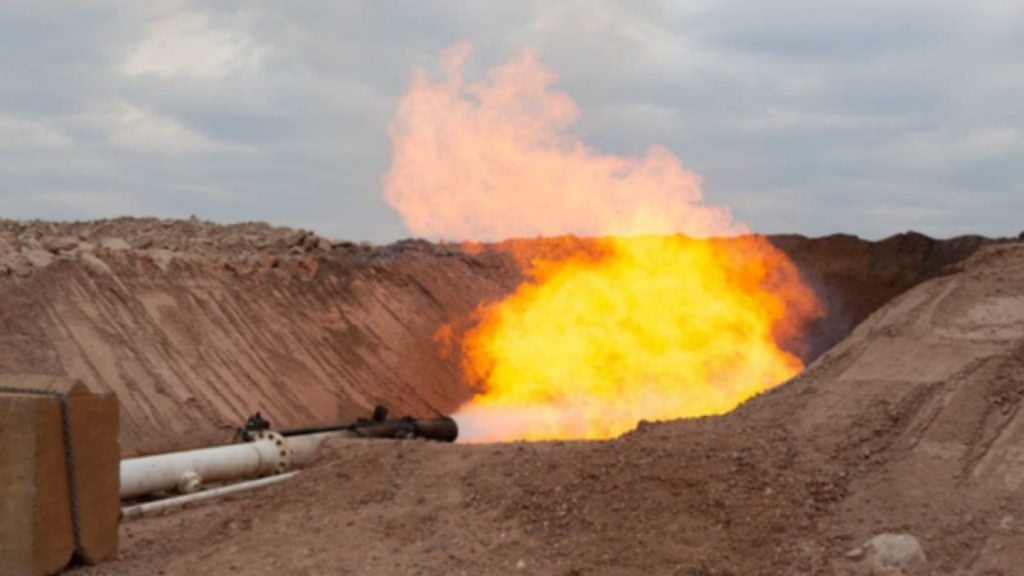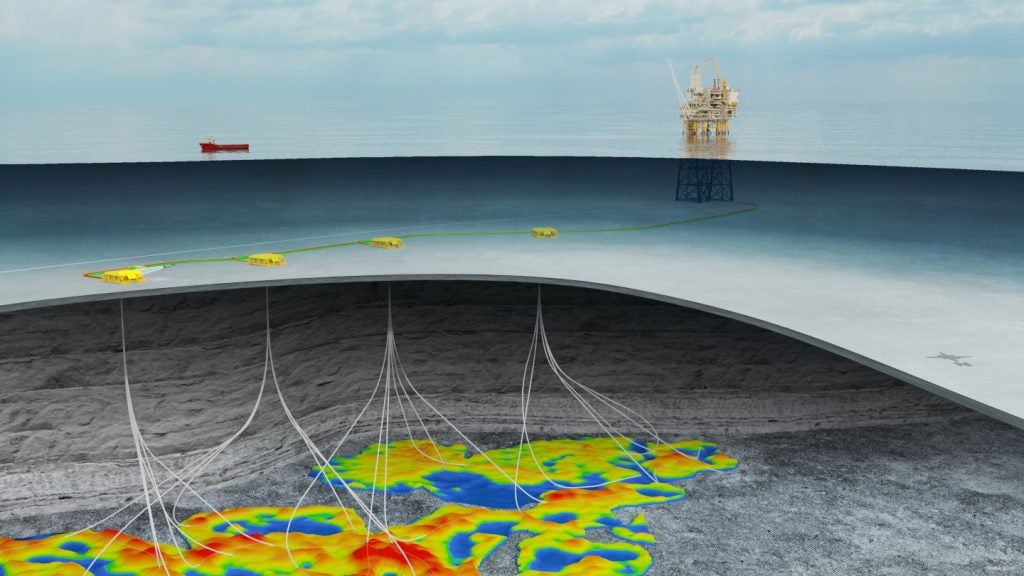The Petronius field is located in Viosca Knoll, block 786, approximately 130 miles (208km) south-east of New Orleans.
It lies in water depths of 1754ft (535m). The field was discovered in 1995 and contains estimated recoverable reserves of 80 million to 100 million barrels of oil equivalent.
Petronius has been developed by a compliant tower, which represents the largest free-standing structure in the world. The cost of the project has been estimated at $500m.
The field’s operator Texaco owns 50% of the field, while the remaining 50% is owned by Marathon.
Development
The field is being depleted by 17 wells, including ten producing wells and seven water-injection wells.
The estimated peak injection is 72,000 barrels of water per day.
Design
Unlike conventional platforms that are designed to resist forces, the compliant tower is designed to flex with the forces of waves, wind and current.
The design specified a height of 1,870ft and a weight of 43,000t, including two tower sections, a foundation template, piles and conductors. The tower accommodates 21 well slots.
The jacket supports topsides of 7,500t. This houses the necessary process equipment for a production capacity of 60,000 barrels of oil per day and 100 million cubic feet of gas per day.
Contracts
The $140m contract for construction of the compliant tower was awarded to J Ray McDermott. McDermott also handled the installation of the entire structure, while the Houston-based McDermott Engineering performed engineering design work.
Gulf Island Fabrication, based in Houma, won a $50m deck fabrication and integration contract, while WH Linder & Associates won the $10m deal for the engineering design work of the topsides and the procurement support.
The topsides are 210ft x 140ft x 60ft-tall and contain all processing equipment, water-injection facilities, export pipeline pumps and miscellaneous utilities for the platform operation. The topsides also support a full drilling-rig spread.
Installation
In 1997, the subsea templates were put into place and the mooring foundation piles were driven into the seabed. The mooring system is based on 12 piles, three located at each corner leg, which extend from the tower legs through the mudline, 450ft into the seabed.
These piles provide the foundation capacity and they were designed to allow the tower to stay within an envelope of a 25ft sway (7.6m), with a 10ft (3m) rotation sway at the surface.
The 4,000t North Module was installed at the end of November 1998. However, during the subsequent offshore lift to install the 3,600t south module on 3 December 1998, one of the two 18,000ft, 2.25in working lift cables broke and unsheathed on the DB50.
This resulted in the $70m module falling to the seabed and damaging the installation barge itself. Due to the lift happening 1,400ft away from the tower itself, the accident did not affect the integrity of the jacket.
After the incident, Texaco assembled a project team tasked with reducing the construction time from the original 27-month period.
The replacement module containing production equipment, waterflood equipment and crew quarters, was built in 12 months at Gulf Island Fabrication in Houma.
In May 2000, Texaco installed the second deck module. The installation contractor Saipem lifted the 3,850t deck module and set it on the existing tower.
Saipem’s S7000 derrick barge used one of its two 7,700t-capacity cranes to perform the lift.
Export
Oil will be exported via a 14in, 20-mile pipeline. Gas will be exported through a 12in, 12-mile gas pipeline.


